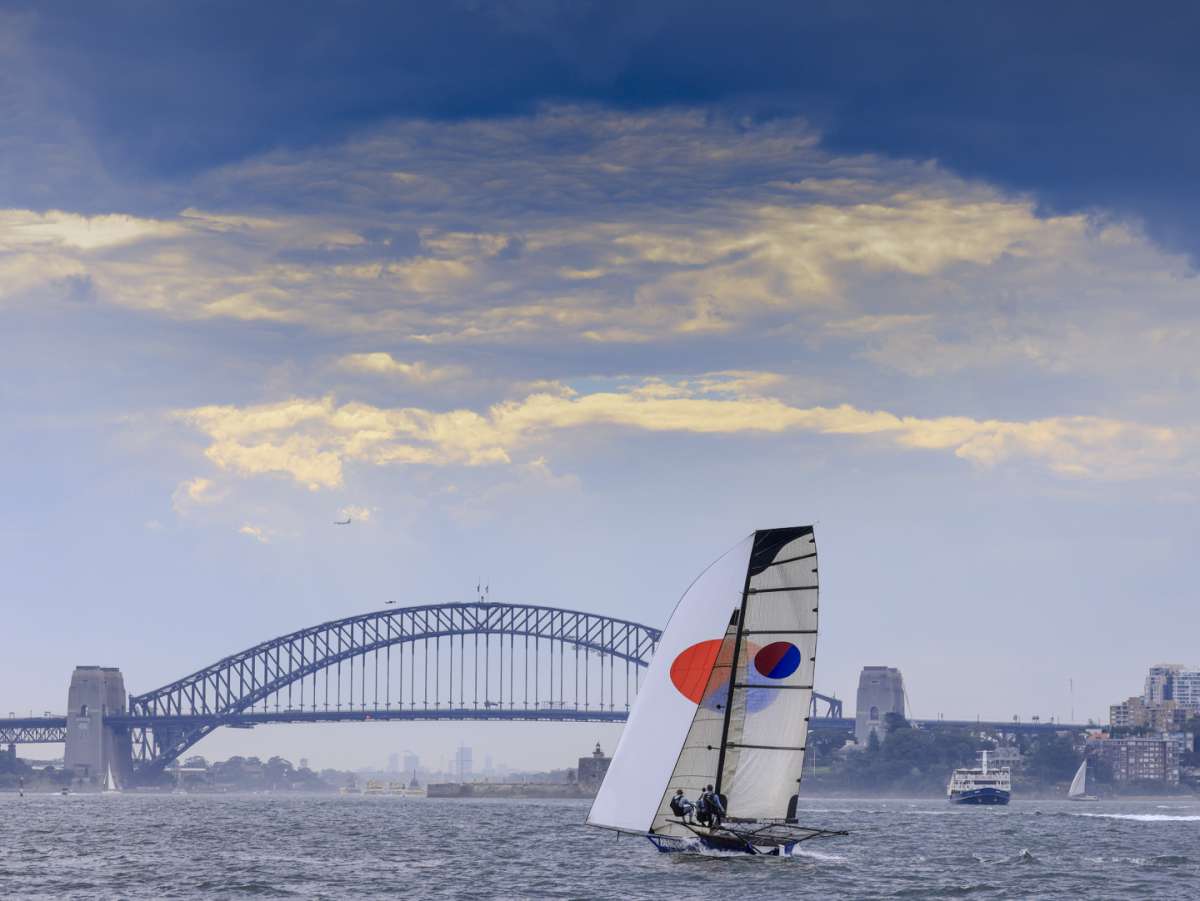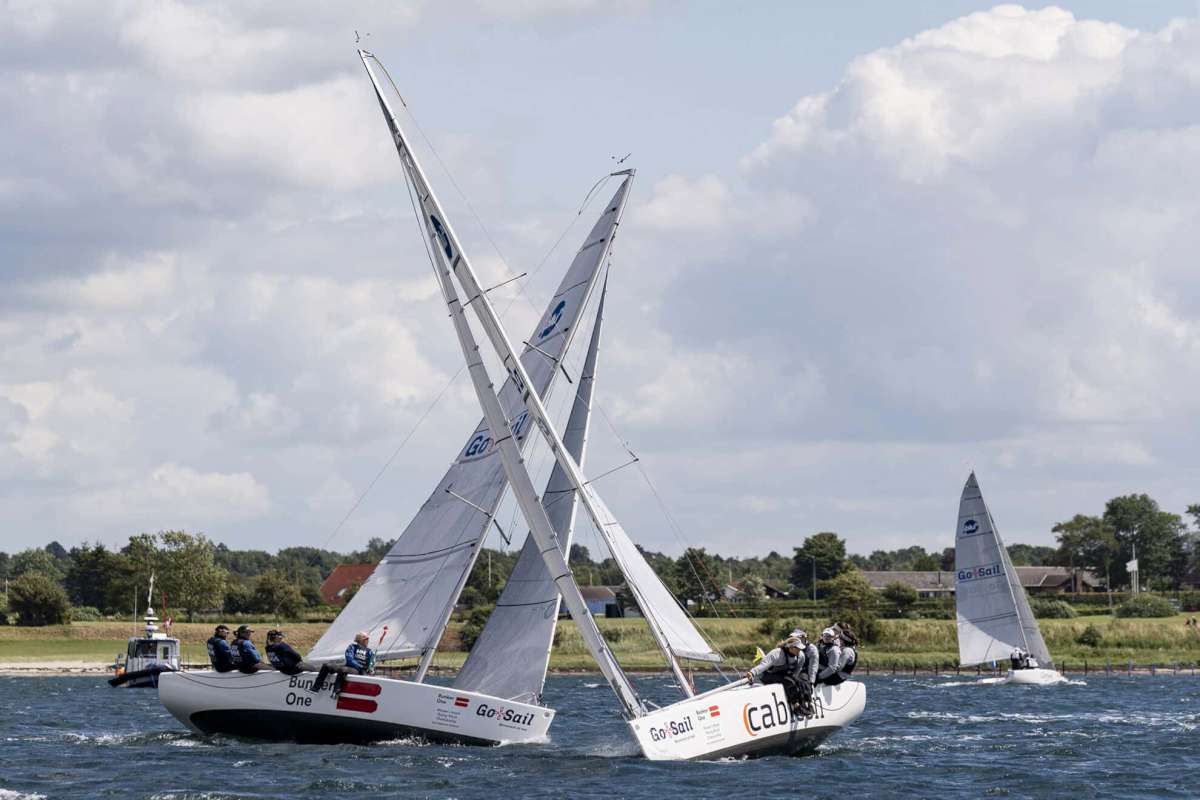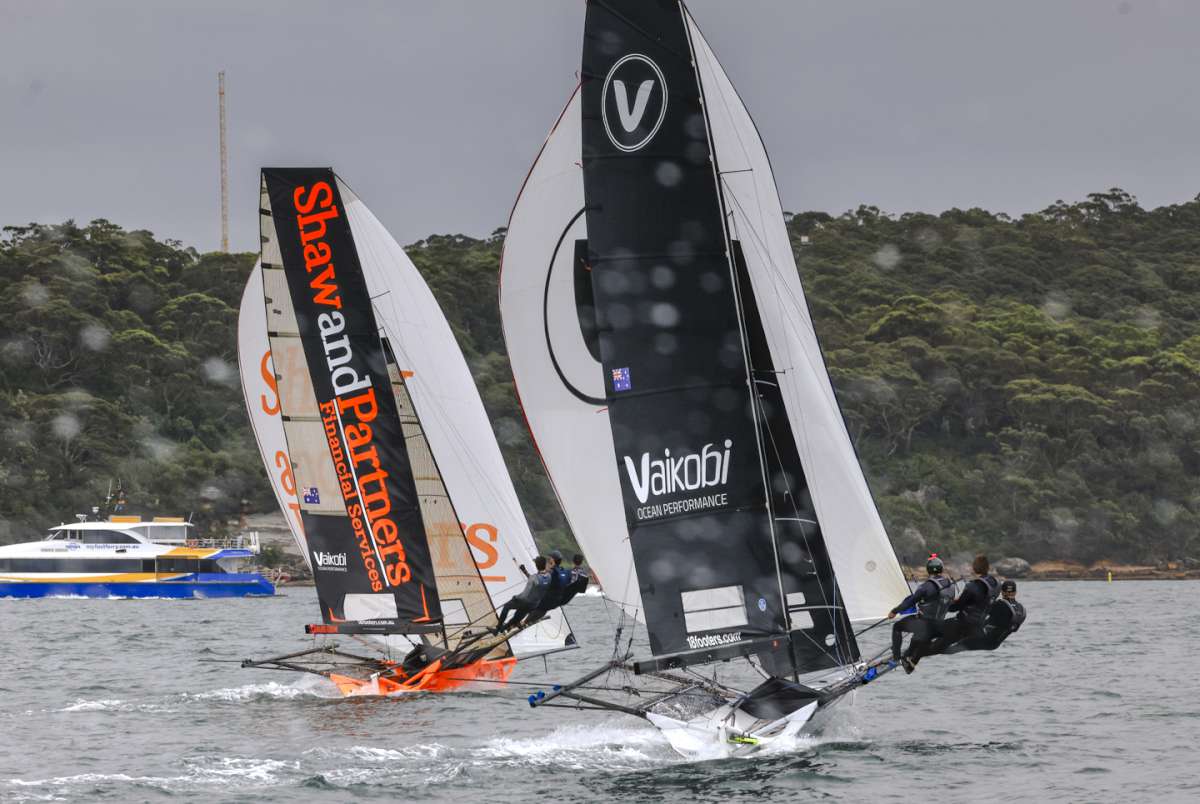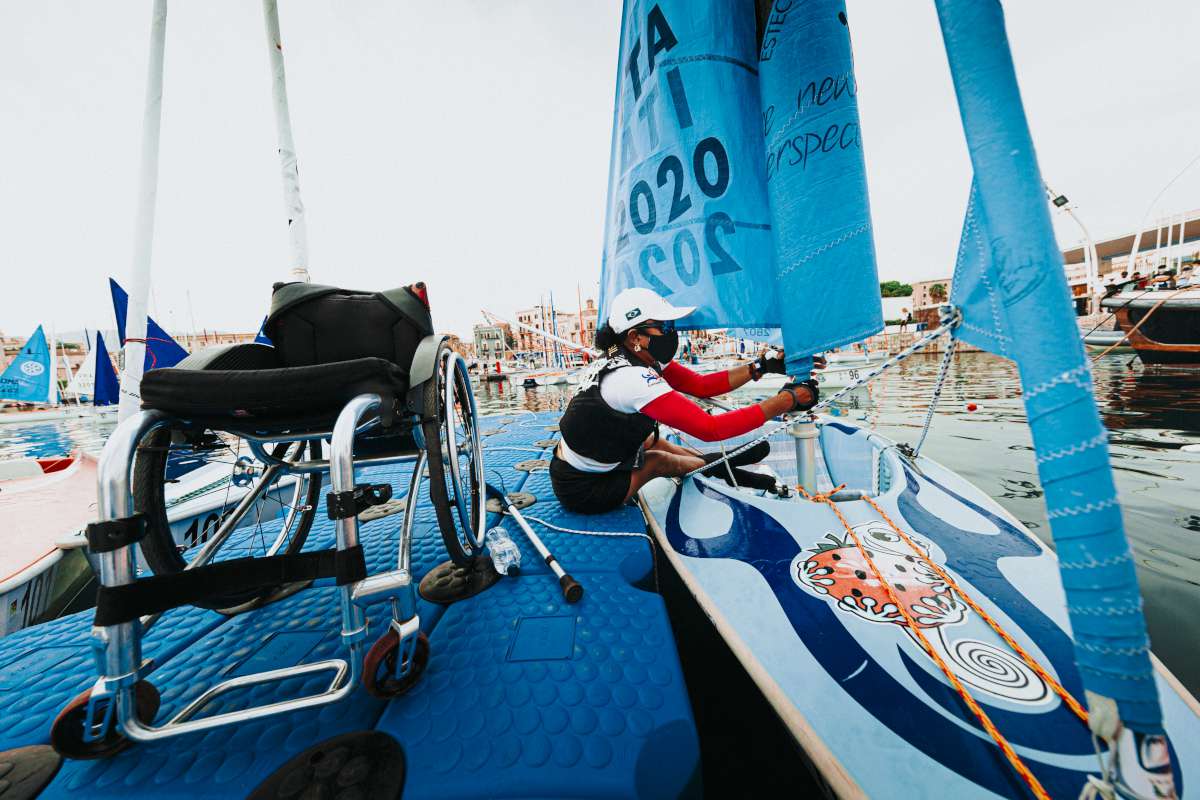It was not really in the schedule to visit the Antarctic we were just planning to see Patagonia, a major milestone in itself and then continue around South America. But when you meet people on boats that have sailed to Antarctica and get told of the majesty and the way that it changed their life, you feel you must at least consider the possibility of visiting it while you are in striking distance.
The prospect was discussed with other boat crews and then we began collecting sketch maps of anchorages and buying extra fuel containers and stocking up on supplies and then making sure the heater was performing well and soon we realised that we were well on the way to being committed. So when Ashley Kerr, the captain of Windjammer put the question to the crew, “should we sail down to Antarctica?” Everyone just nodded their heads in agreement.
This is not to belittle the magnitude of the decision as everyone was well aware of the task ahead. Crossing the notorious Drake’s Passage not once, but twice and surviving the freezing temperatures and storms that Antarctica could throw at us would not be easy. But surely not impossible for the well-travelled schooner Windjammer and her six seasoned crew.
We watched for a suitable weather window to cross the 500 nautical miles to Antarctica and when a likely opportunity arose on the 19th January we headed south.
Our first night was a rude awakening with 35 knots and cold, wet conditions. If our first night was this miserable, I was wondering whether the trip would be worth the effort. I need not have worried, as soon the conditions moderated and with Petrels and Albatross for company we made good time south.
Our first sighting of land was Smith Island and it was from this moment on that we were under the spell of the White Continent. Sheer rock faces and ice cliffs appeared lit by shafts of sunlight and then disappeared into banks of cloud.
We saw another island miles ahead but as we approached we realised it was a massive iceberg. Beams of sunlight danced around the choppy water and then disappeared into the gloom. From this moment on we were mixed up in a swirl of emotions.
There was awe at the grandeur of the scenery, yet trepidation over the ever changing conditions. Astonishment at the abundance of wildlife. Anxiety over the amount of ice we might encounter along the way. Amazement at the sculpturing of the icebergs and all the while in the back of everyone’s mind was the foreboding that we had another crossing of the Drake’s Passage to endure.
These emotions continued for the ten days we cruised the islands and channels of Antarctica and there was no doubt in anyone’s mind that we were experiencing one of the ultimate highlights the world has to offer. We felt additionally privileged when later on the clouds cleared and we were blessed with clear skies and windless days for most of the time we were there.
Our first stop was the drowned caldera of the still active volcano, Deception Island. The harbour inside was entered through the narrow Neptune’s Bellows, so named because of the frequent gales that howl between its cliffs.
We continued further inside Port Foster to Telefon Bay, a small sheltered inlet tucked into the side of the larger harbour. There was good holding in the volcanic ash bottom and we swung happily at anchor without any shore lines.
In the morning the wind had abated and the scenery of muted browns and soft whites with a low grey cloud cover reducing the vista to a black and white daguerreotype.
We motored back across Port Foster to Whalers Cove, where the remains of an old whaling station lie buried amongst the volcanic ash and mud flows from a 1969 eruption.
We enjoyed walking amongst the rusting ruins with penguins walking obliviously through this reminder of past carnage. Whalers Cove is a prime destination for cruise ships and we encountered the first of the many that we saw
in Antarctic waters.
One of the researchers from a ship we met ashore placed a thermometer in the sand and registered 60° Celsius where Windjammer was tied.
It is possible to dig in the sand here and make your own rotemburo.
The weather deteriorated in the evening and by morning the brown landscape was covered in a mantle of white snow.
With icicles hanging from the sail cloth and rigging and snow on the deck we made an early start for our push to reach the continental Antarctic. The visibility was not great, but we had a fair wind and we enjoyed a great sail.
We stood one hour watches because of the cold but with the following wind it was not unpleasant, especially as the dry snow simply brushed off our wet weather gear.
We frequently spotted icebergs through the mist and occasionally we had to divert around them.
Passing glimpses of craggy snow-capped islands kept us captivated throughout the day. We reached Murray Bay, our intended anchorage, in the early evening only to find a huge iceberg floating right on the only spot where it is possible to drop an anchor.
Moving the behemoth was impossible and after find no practical alternatives our only option was to continue on. A couple of hours later we approached Portal Point on the Recluse Peninsula. As we transited the narrow entrance close to midnight we were thankful that twilight still remained because charts and GPS are unreliable down here. With anchor down and two lines ashore we all slept very soundly.
A bright sunny morning showed that we were sharing the anchorage with a basking Crabeater seal who was totally unconcerned by our approaches. It was so fat from gouging on food that it needed to lie on its back to relieve pressure on its bloated stomach, yawning and belching as it soaked up the warmth of the sun.
The sea was calm as we enjoyed the first of many days of brilliant sunny weather motoring the short distance to Enterprise Bay. Here we rafted up to the yacht Santa Maria, which in turn was moored to the rusting hulk of the old whaling ship Governoren. Beached by the captain many years ago after catching fire, the remains of the ship provide good service as a safe berth for visiting yachts.
The weather stayed fine the following day as we motored further south. It was hard to conceive the size of the surrounding glaciers until we saw the Santa Maria dwarfed by the towering ice cliffs she was passing. Transiting between the steep mountains on either side of the Neumeyer Channel was like sailing through the Alps in winter.
Thick brash ice blocked the entrance to Port Lockroy so we very gingerly nudged our way through and once safely inside dropped our anchor in one of the few fully secure ports on the peninsula. The old abandoned British scientific huts at Port Lockroy have been taken over by the UK Antarctic Heritage Trust and turned into a museum, souvenir shop and post office that is very popular with the cruise ships. Over 18,000 people visited the establishment last year to see a little snapshot of scientific life in the 1950s.
The following day, after touring the base we continued further south until we were distracted by an arch in a huge iceberg that would provide a perfect frame through which to photograph Windjammer. We lowered the dinghy and zoomed across the emerald waters below the arch to take some memorable shots of her in front of the sunlit mountains.
That night we spent tied by four lines between Booth Island and a rocky islet in Port Charcot. There was a Gentoo penguin colony that incredibly extended from the water to over 400 metres high up the nearby mountain ridge. We marvelled at the fortitude and, after watching them stumble along, we could only guess at how long each trip to their nest took them on their stumpy little legs.
The next day, after a visit to see the penguins we continued south through an iceberg graveyard. Here icebergs lay marooned in shallow water until they shrink in size and eventually disappear altogether. We never tired of looking at the bizarre ice sculptures displayed in own private open air gallery.
In the afternoon we arrived at the Argentinean Islands, which at 65°S were our southernmost point of the trip. After securing ourselves with a couple of lines in a tiny nook up an inlet we went to visit the nearby Vernadsky base. Here 12 Ukrainian men spend the whole year carrying out scientific research on the ozone layer, geomagnetism and meteorology and making some very good vodka which they kindly shared with us.
That evening we were treated a stunning sunset with the delicate pink light reflected on the many icebergs that stretched as far as the eye could see out to the horizon.
We awoke to another tranquil, sparkling, cloudless day. In the stillness of the night a thin sheet of ice had formed on the surface of the sea, but this was easily pushed out of the way by the dinghy as we went ashore and climbed to the top of the island to enjoy the magnificent sweeping panorama. We had heard reports of the ice becoming denser further to the south, so we turned north and headed for the Lemaire Channel. We couldn’t have asked for a more perfect day.
After navigating through a band of thick ice we reached the Lemaire Channel and at the centre of the 6nm long channel we turned off the engine and just drifted along. The silence was total.
As we ate lunch we watched a pod of Minke whales swim by, then a seal came to play beneath the boat and all the while the snow covered mountains nearly a kilometre high on both sides of the channel reflected in the water you could have mistaken for glass.
It was with great reluctance that we finally decided to turn the engine back on and continue our journey. Passing between Bryde Island and the mainland we skirted many icebergs that had been calved from the glaciers and ice cliffs that line the passage. We passed humpback whales feeding. We saw myriad penguins porpoising out of the water. Every corner we turned the scenery was stunning.
We put out an anchor and two lines ashore to Waterboat Point where there is a Chilean base and by the time we sat down to dinner at 11.30 that night we were somewhat stunned at having experienced such a special day.
Juan, the hospitable Chilean base commander, gave us a tour of their facilities the next morning before we headed to Andvord Bay. We had our usual ‘ice pilots’ Adrian and Nick, stationed up on the bow to guide the helmsman around the smaller pieces of ice that were difficult to see from the helm as we crossed the motionless waters of the bay. Our destination was Neko Cove.
It was too steep sided on the shore to anchor so Cathie and Maggie stayed with the boat while the four boys walked up the side of a hill for a magnificent view over a glacier and out beyond the bay. We continued on to Cuverville Island where we dropped anchor and tied some stern lines around two rocks on a spit.
In the morning we were woken by the sound of icebergs bumping down the side of the boat. The tide had turned and an eddy in the lee of the spit was pulling icebergs into the anchorage. We dropped the stern lines and left the boat swinging on the anchor while we went ashore to examine some whaling relics and visit a penguin colony.
No matter how many times we watched these stumpy little birds, they were always entertaining. Picking up rocks and transporting them to their nest. Fending off trespassing penguins. Feeding their chicks and generally squawking and carrying on.
Occasionally a Skua would swoop down and steal a chick. In the short time we were in the Antarctic it was noticeable how quickly the chicks had grown, but we were a little sad knowing that they still had to run the gauntlet of waiting seals when they took their first tentative awkward strokes while learning to swim.
We motored a short distance to the Melchior Islands which was to be our last Antarctic anchorage. Tucked into a little inlet facing an ice cliff we made our final preparation for the journey back to South America. We secured the dinghy on deck, transferred the last of the fuel from the drums into the tanks, went over the safety gear and looked for a suitable weather window.
Although we were prepared for a long wait, we decided the timing was right and departed the following morning. The good weather held and we had fair winds for the four day trip north. There were occasional rain showers and lumpy seas, but where conditions are often atrocious these were seen as minor inconveniences.
There was a huge sigh of relief when we sighted Cape Horn and we just could not believe our luck with having
a second favourable crossing of the Drake’s Passage.
In reality it was not just the crossing we had luck with, but the whole unforgettable voyage.


























